The Asiatic lion is a big cat and lion subspecies that can only be found in Gujarat, India.
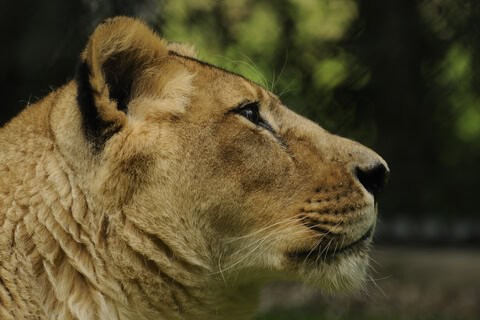
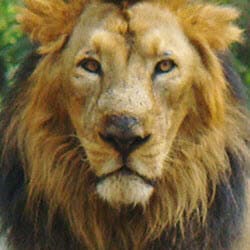
Scientific Name: Panthera leo leo
Conservation Status: Endangered
Population: There are an estimated 600 Asiatic lions still living in the wild.
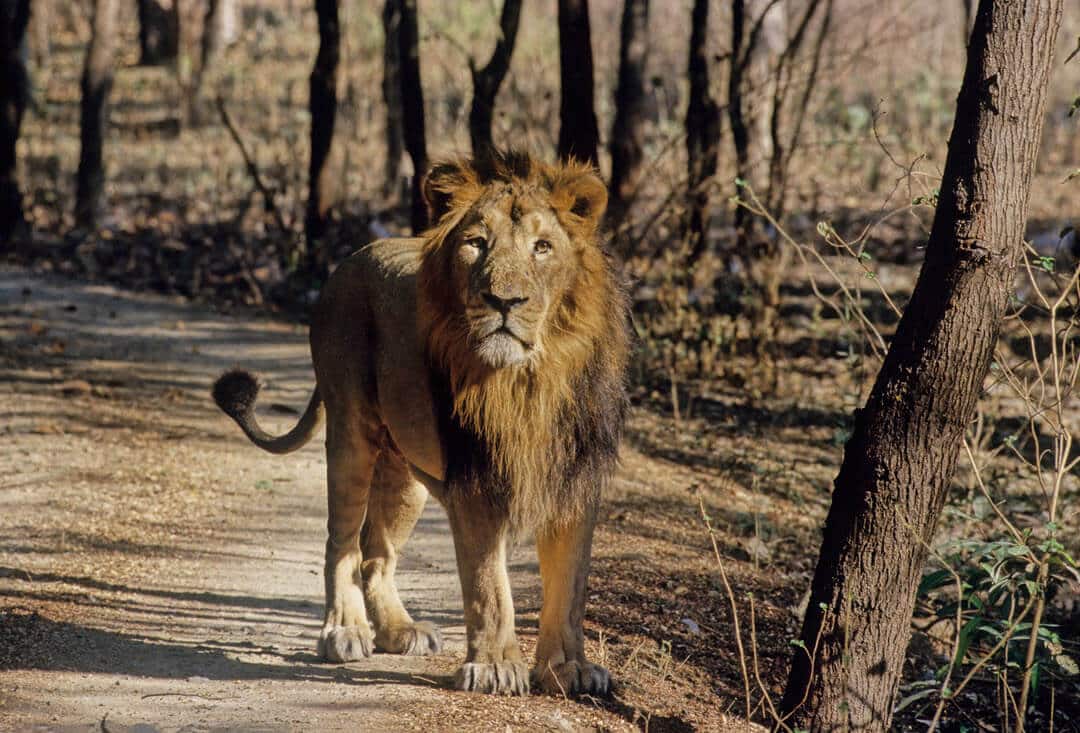
Interesting Asiatic lion facts
- The males usually have smaller manes than African lions but a larger tuft at the end of their tail.
- The lion was almost extinct, but its population has been recovering due to intense conservation efforts.
- It has a fold of skin along its underbelly.
- They have a tuft of hair at the end of their tails
- They have bunches of hair on their elbows
- Asiatic lions do not usually travel and hunt together.
- They have smaller prides compared to the African lion
- Male Asiatic lions sleep or rest many hours a day.
- Most of the hunting in an Asiatic lion pride is done by females.
- When an Asiatic lion walks, the heels of their feet don’t touch the ground.
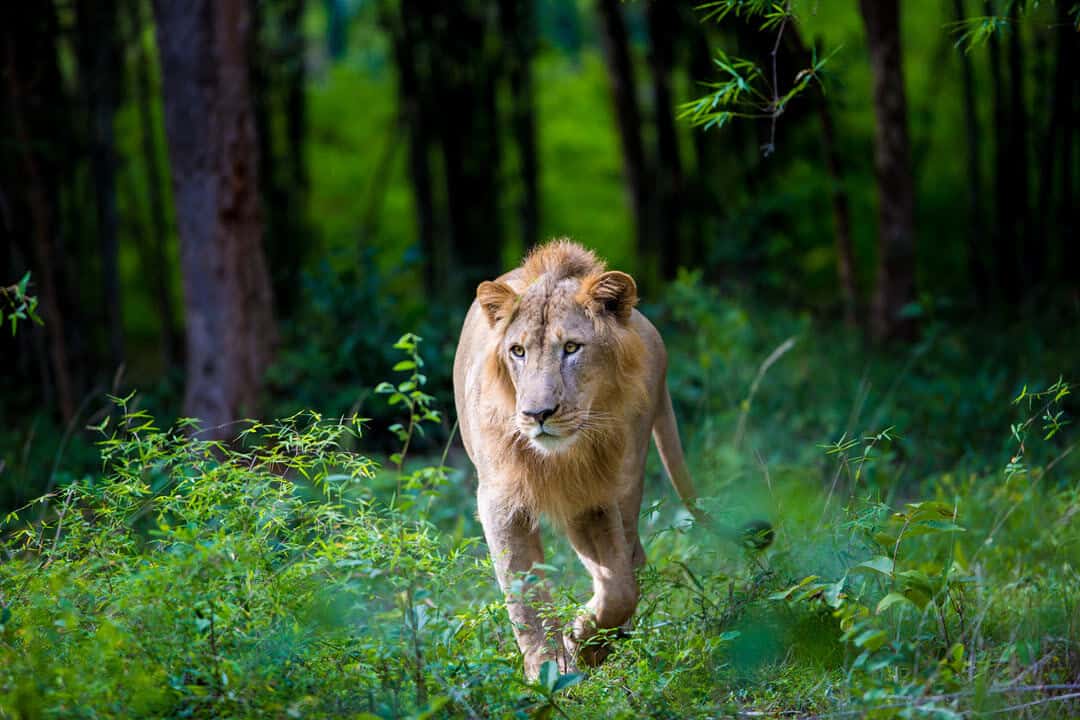
More About Asiatic Lions
Asiatic lions are generally smaller than African lions, but are about the same size as the Central African lion. Their mane is also shorter, with less hair and darker.
Origins and history
The Asiatic Lion once roamed throughout Persia (Iran), Palestine (a region between Syria, Egypt, and Arabia), Mesopotamia (Iraq, Syria, and Turkey), Balochistan (southwestern Pakistan, southeastern Iran, and southwestern Afghanistan), and India. Today, the remaining lions live in a handful of protected areas in India’s Gir Forest.
Physical Appearance
This big cat has a shaggier coat than the African lion, with a fold of skin along the belly and hair on the end of the tail and elbows. The lion’s fur can range from pale brown to sand or grey. Generally it blends with the warn, golden colors of the scrublands they inhabit.
A unique characteristic of the lion is the fold of skin across its belly. Males have a medium-length mane, and their ears are visible.
Males are 5.5 ft to 8.2 ft. in length. Females are smaller – around 4.6 to 5.7 feet in length. A male lion weighs around 352 to 419 lbs, while a female weighs 243 to 265. They have sharp canine teeth and retractable claws.
Location and habitat
The remaining Asiatic lions can be found in Gir National Park and Wildlife Sanctuary. Established in 1965, the park is located in Gujarat, India, and is part of the Khathiar-Gir dry deciduous forest region. The forest stretches over 100,000 square miles across three Indian states: Gujarat, Rajasthan, and Madhya Pradesh. The trees in the forest are primarily teak, thorny trees, and scrub.
Gir is home to 38 species of mammals, 300 species of birds, 37 species of reptiles, and over 2,000 species of insects. Wild cats that inhabit the area include the Asiatic lion, Indian leopard, jungle cat, Asiatic wild cat, and rusty-spotted cat.
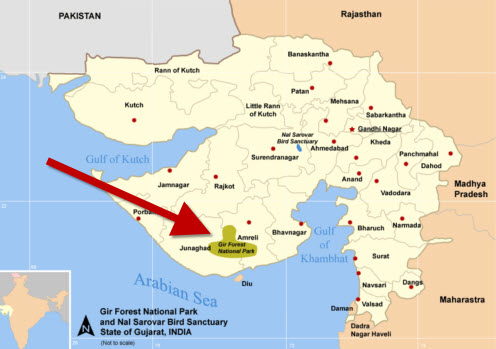
Image: Gir National Forest, India
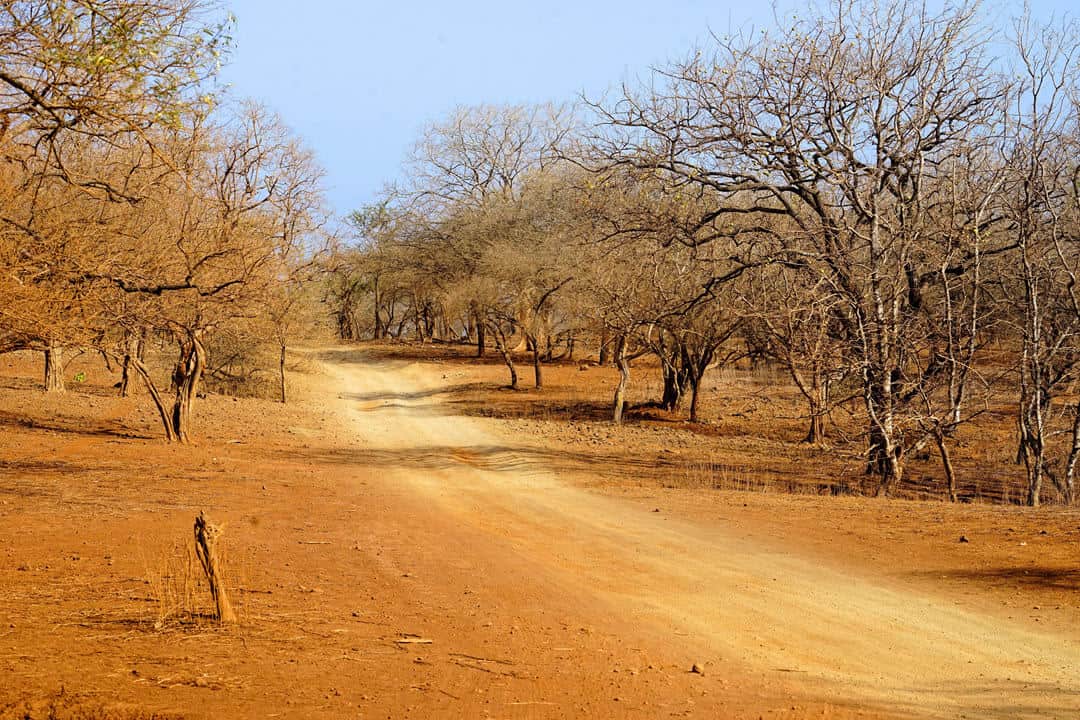
Asiatic lion behavior
The home range of a male lion can be up to 90 square miles. Females have a smaller home range, usually around 30 square miles. Males spend up to 20 hours a day sleeping and resting. Their vocalizations include roaring, growling, snarling, meowing, purring, puffing, bleating, and humming.
Hunting & Prey (Diet)
The lion’s prey includes deer, cattle, antelope, and wild pigs. It prefers large prey—animals that weigh considerably more than the lion itself. When females hunt, they usually hunt in a group of several individuals or more. When males hunt, they hunt in smaller groups of two to three other ions. Females will share carcasses.
Reproduction and lifespan
Just like African lions, Asiatic lions live together in social units called prides. Males will belong to a small group of other male lions, sometimes called coalitions, that protect the females in their area. Females will belong to a group of up to a dozen or so females. Males generally only associate with the females when mating or hunting large prey.
Asiatic lions mate with females all year long. At around 5 years of age, the males reach sexual maturity, while the females reach sexual maturity at 4 years of age. The gestation period for females is 100 – 119 days. Females can give birth to as many as six cubs, and they care for the cubs for several months.
Asiatic lion cubs begin eating meat at 3 months of age. However, they continue to suckle for approximately 6 months. During the first 9 months of their lives, they learn to hunt.
The lifespan of an Asiatic lion is from 16 to 18 years.
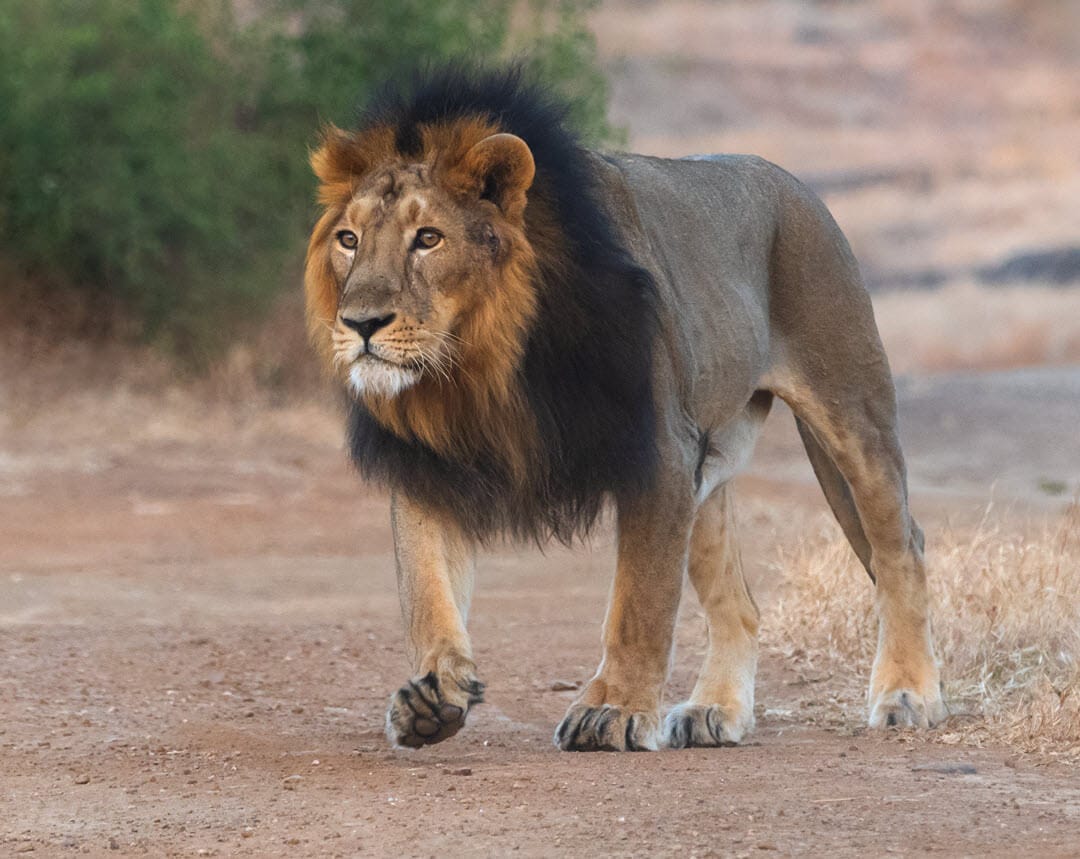
Asiatic Lion Conservation
Asiatic lions live in India’s protected Gir Forest, where they are vigorously monitored. In-breeding is a top conservation issue for the lions due to the small size of their group. Diseases, forest fires, and poaching are also significant concerns. Some Asiatic lions (about 20%) live outside the protected area.
Research quotes
“Asiatic lions typify most challenges faced by large carnivores: single population, historical bottlenecks, habitat loss, poaching, and conflict with humans…Lions within PA (Protected Areas) fed primarily on wild-prey, while scavenging and predation on livestock was the mainstay outside…Future of lions outside PA is uncertain as breeding refuges and their connecting corridors are vanishing rapidly.” – 2019 Asiatic Lion: Ecology, Economics, and Politics of Conservation | Jhala, BAnerjee et al.
“Historically, Asiatic lions (P. l. persica Meyer, 1826) ranged from North Africa, Eastern Europe, the Middle East, Northern Greece, Turkey, Iran, and Iraq to southwest Asia…Prey abundance, prey distribution, water availability, and factors like sex, age, pride size, and social status influence how much space a lion needs to roam…multiple male home ranges can overlap these female territories, leading to females’ multi-male mating strategy unique to Asiatic Lions.” – 2024 Regional Sustainability through Dispersal and Corridor Use of Asiatic Lion Panthera leo persica in the Eastern Greater Gir Landscape | Mehta, Rakholia et al.

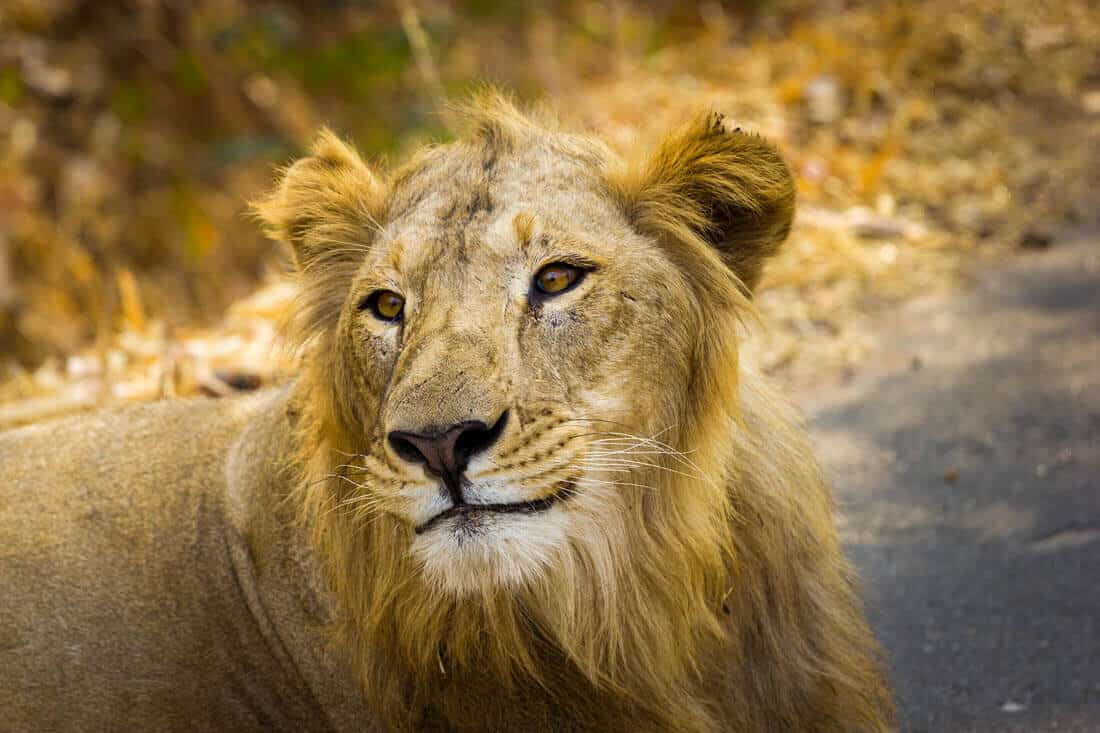
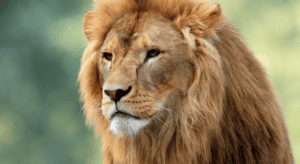
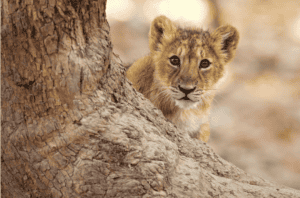

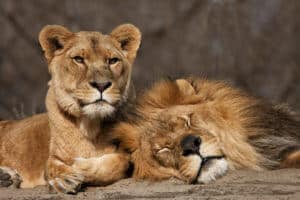
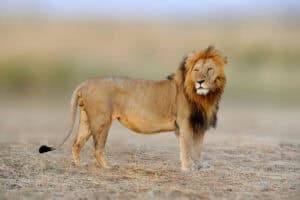

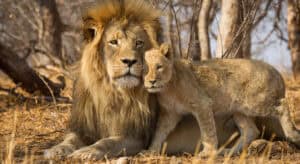
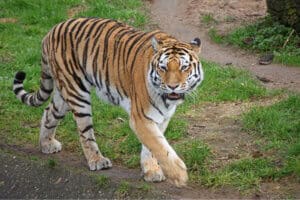
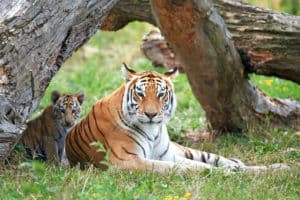
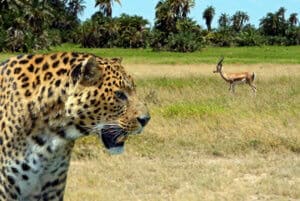

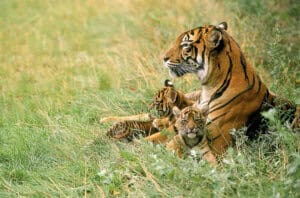

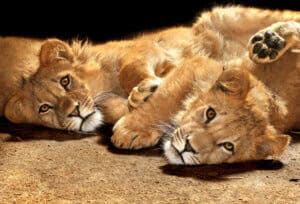
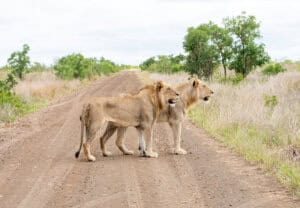
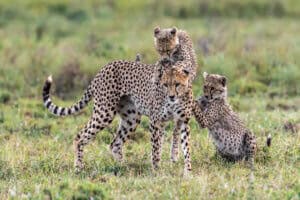


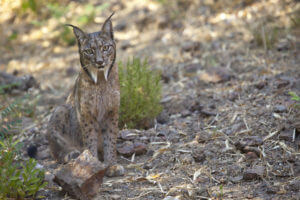




thanks for information